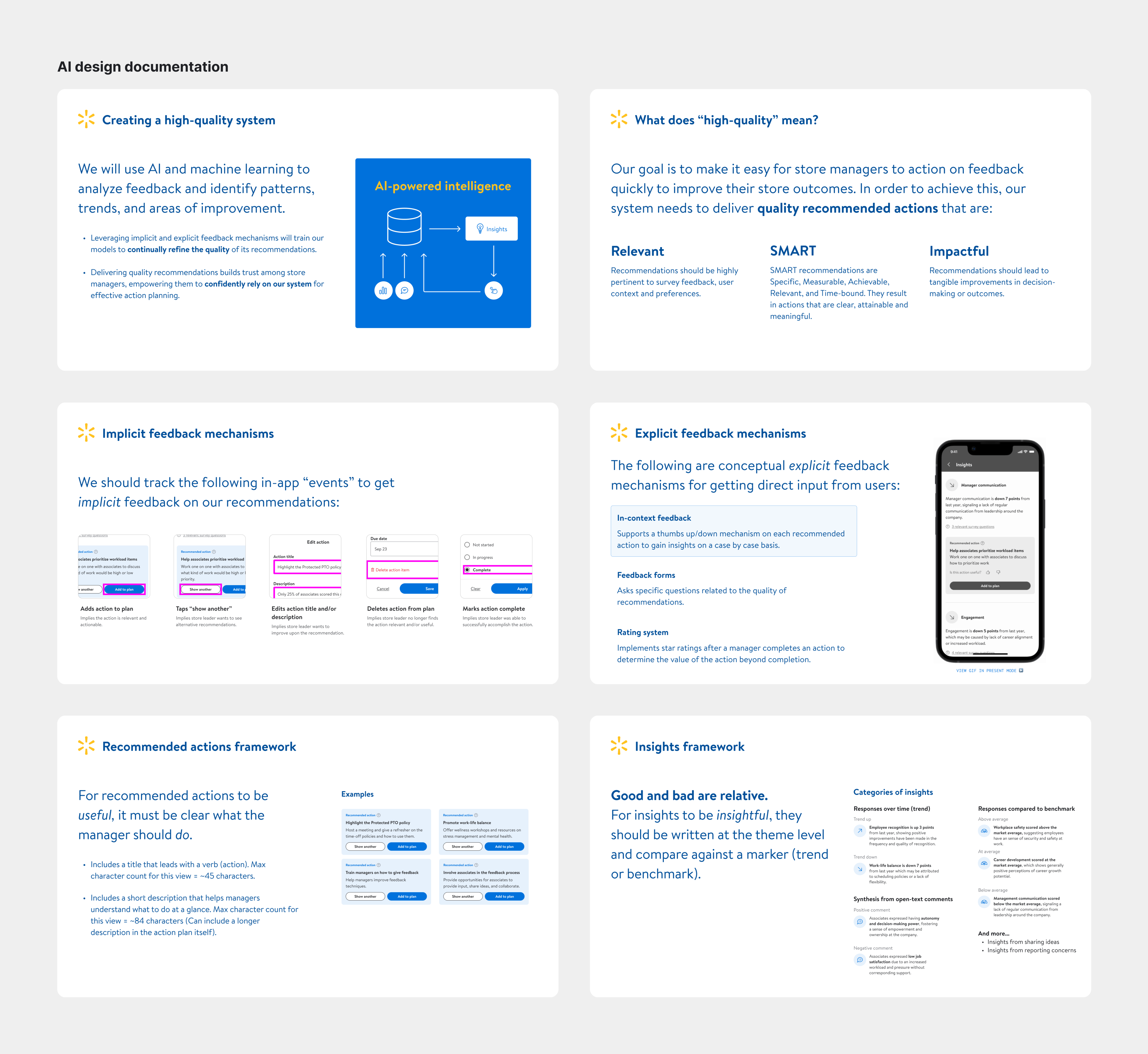Associate Listening
Company
Walmart
My Role
Project design lead working closely with a Sr Designer and Design Manager; in collaboration with research and content partners.
Timeline
Q1 – Q2 2024
Associate Listening is a central part of Walmart’s vision to be a premier workplace that attracts, retains, and nurtures top talent to drive business growth.
By equipping store managers and leaders with real-time insights from associate feedback, we can empower them to take action and positively impact Walmart’s culture and business outcomes.
Associates: The more associates share their thoughts and experiences, the more opportunities managers have to learn and respond effectively.
Managers: When managers address feedback in transparent and meaningful ways, it encourages even more associates to share their insights, creating a continuous cycle of improvement and engagement.
We used this to define the user journey and communicate the relationship and dynamics of the holistic program to our stakeholders.
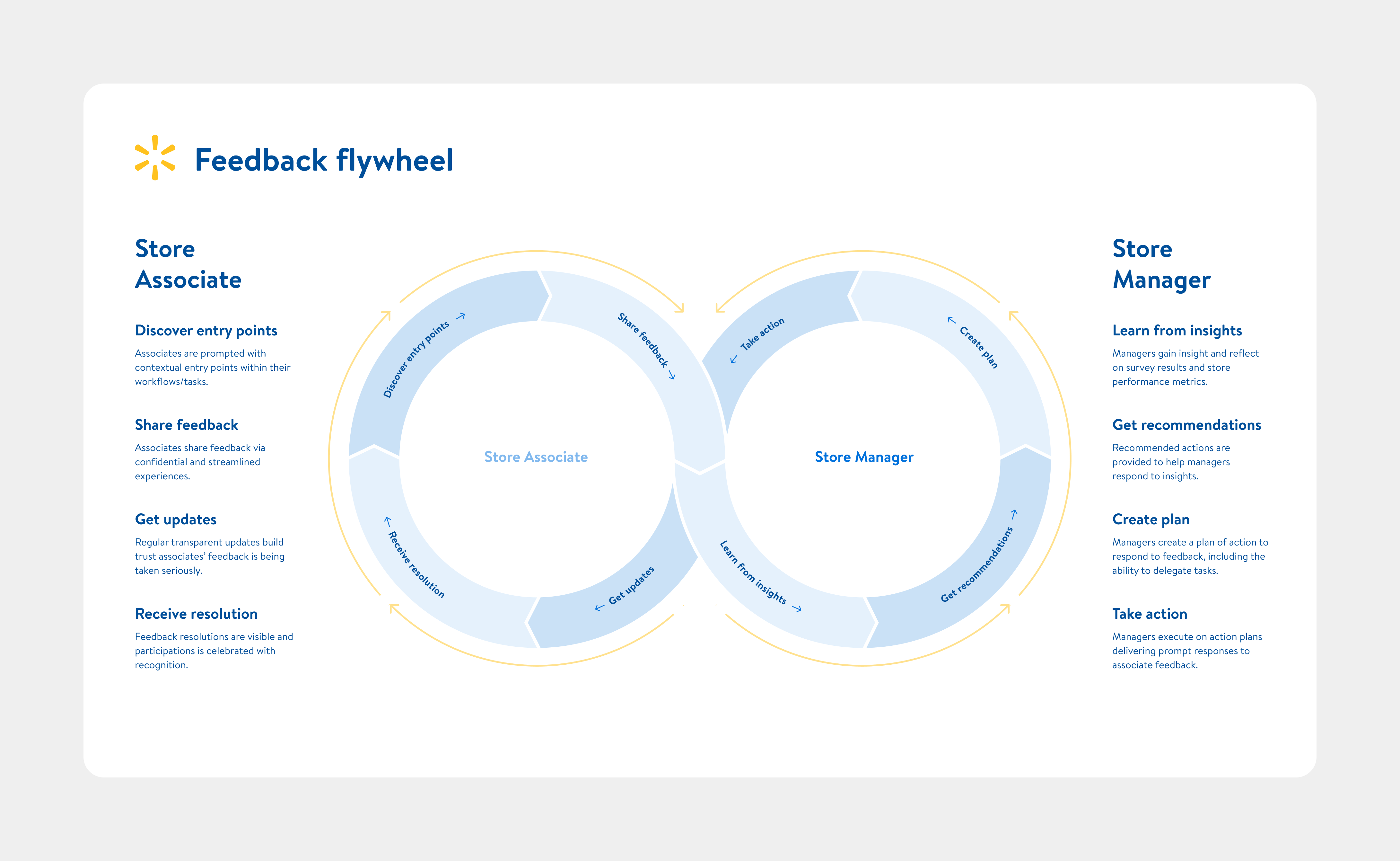
Current state insights
Guiding principles
This approach was vital as we were developing a proprietary AI system, and navigating many unknowns. Because of this, there was a big opportunity for design to play a significant role in shaping the development of the system itself along with its features.
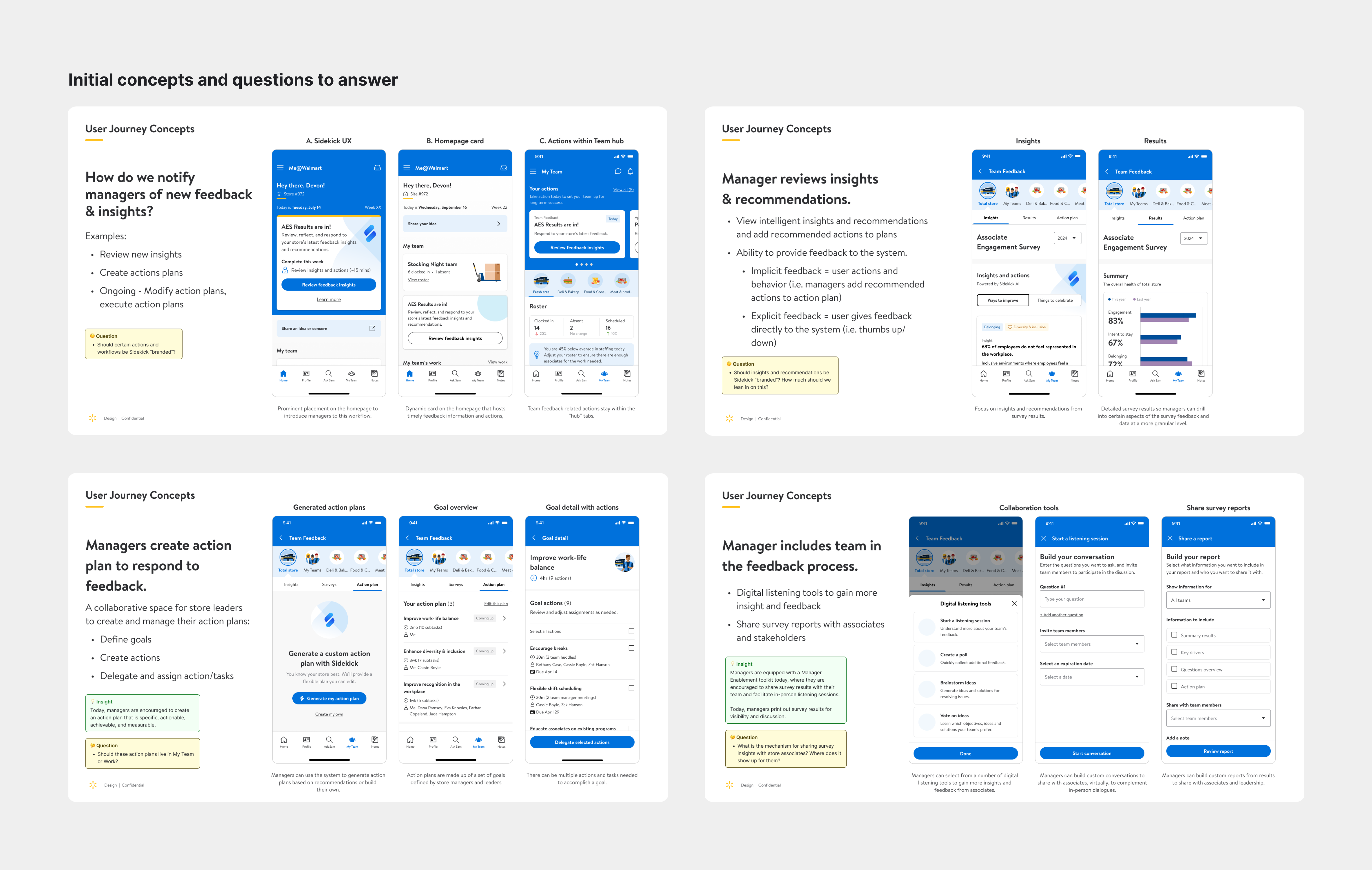
We collaborated with a research partner to define our research goals and develop a test plan.
Research approach
Remote 1-on-1 interviews with Store Managers (x2), Store Leads (x2), Store Coaches (x2), and one Market Manager across the U.S.
Research goals

Key takeaways
We collaborated with a large internal and external stakeholder group to align on key decisions that were core to the experience:
- App architecture
- Content organization
- Integrating Machine Learning and AI
App architecture
- Tab navigation has reduced visibility and usability with our users.
- Hard to scale when adding additional feedback methods and features.
- Keeps survey data front and center which is what we are trying to avoid.
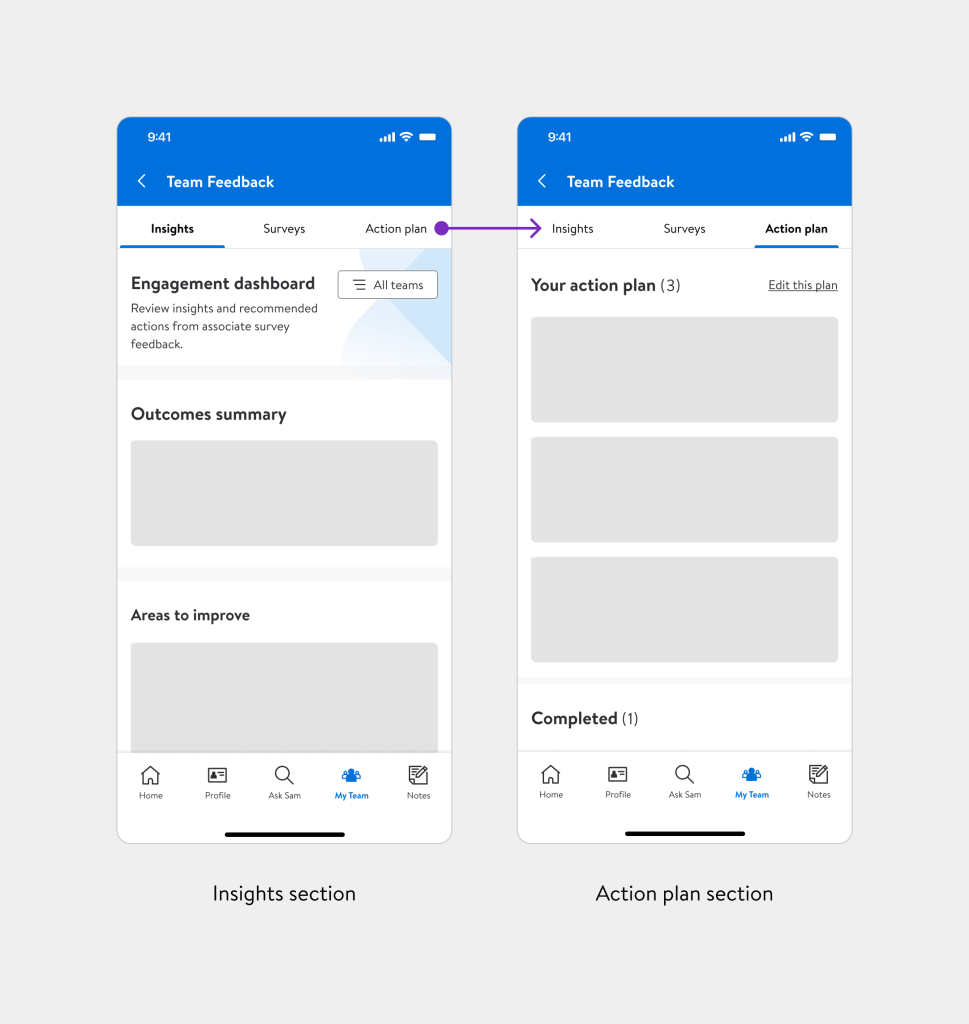
- “Hub” model emulates large scale navigation in a mobile page environment.
- Improves future proofing and scalability.
- Increases store leaders’ focus on the appropriate task at hand.
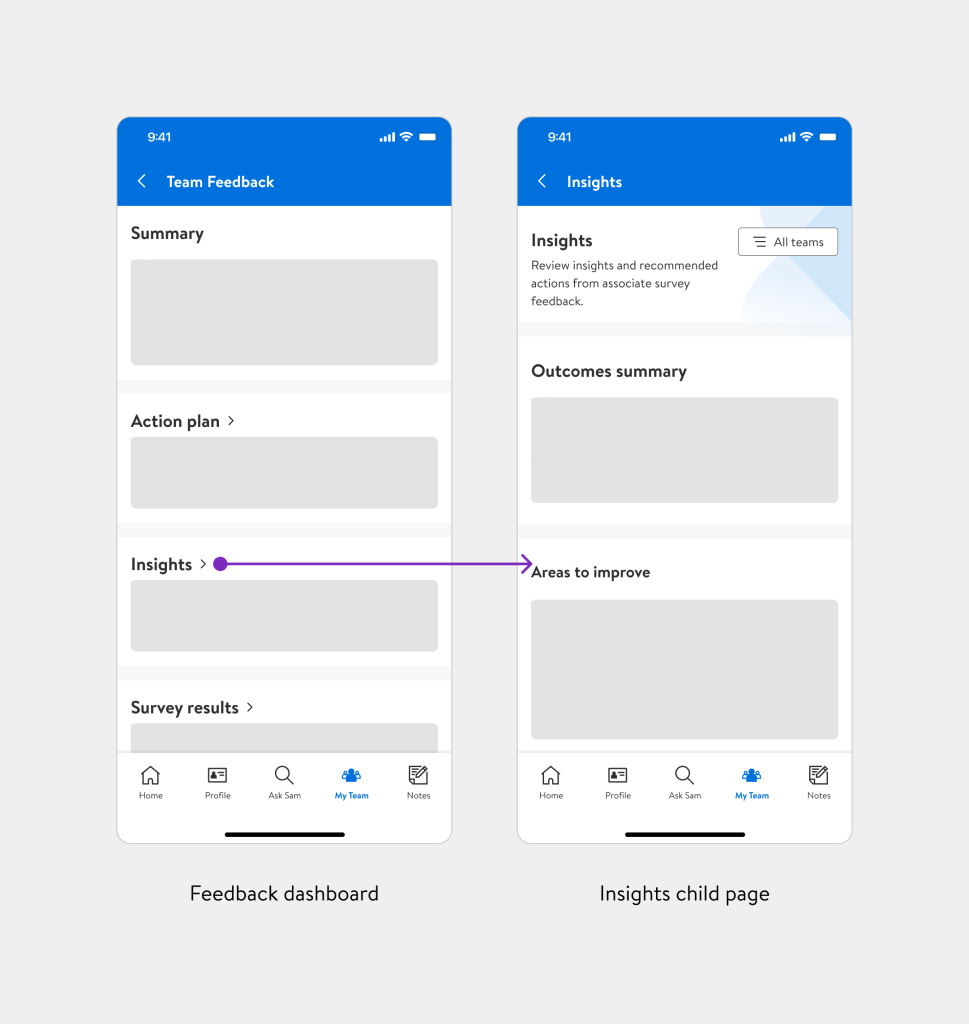
Content organization
- Increases cognitive load between survey themes and outcome metrics.
- Increases the amount of content and scrolling.
- Separates recommended actions across outcomes.
- Creates confusion as to the origin of the recommended actions.
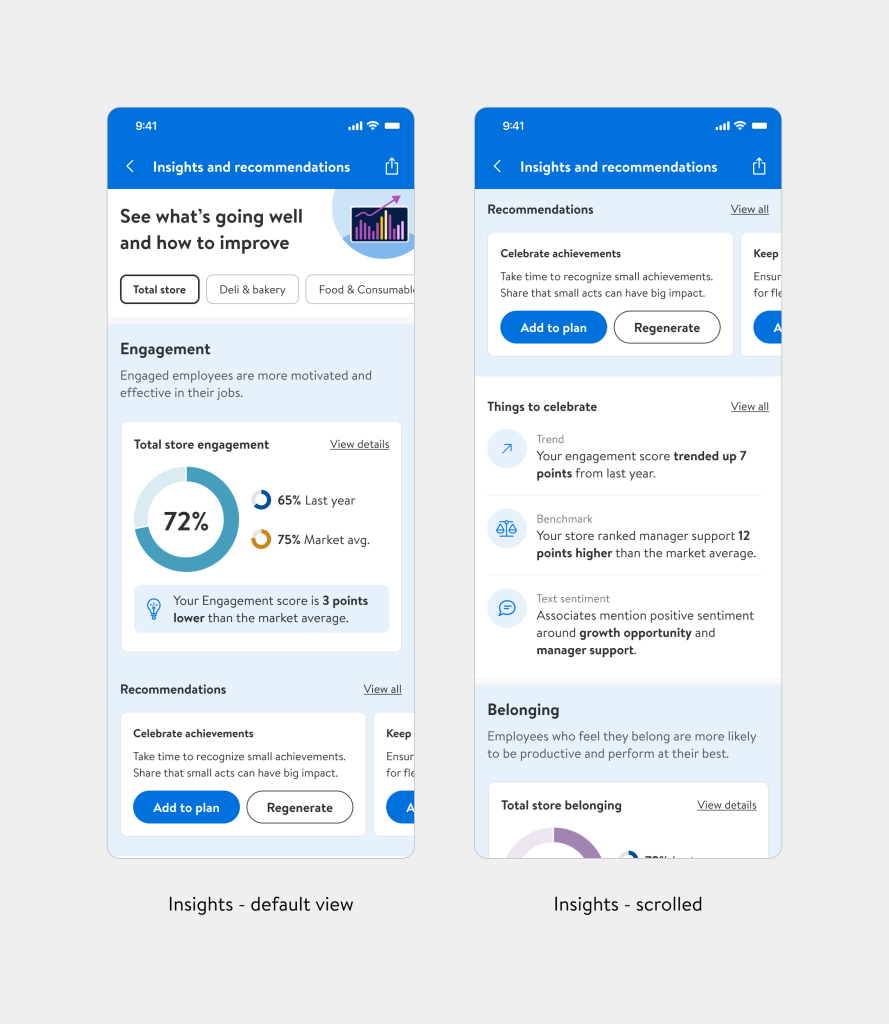
- Prioritizes what’s important for store leaders to know, holistically.
- Improves scalability as more feedback methods are added.
- Centralizes all actions in one section to get store leaders to act, faster.
- Creates a strong relationship between insights and recommended actions.
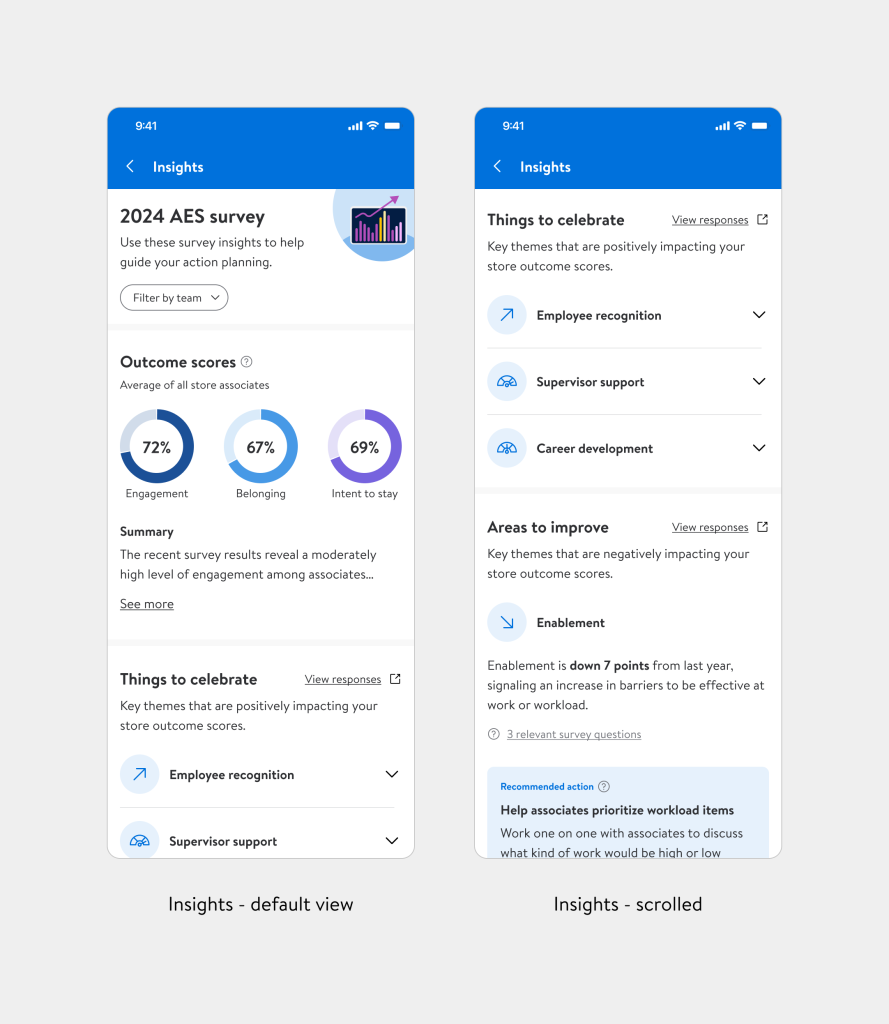
Integrating Machine Learning and AI
- Defines what a “high quality” AI system looks like.
- Leverages implicit and explicit feedback mechanisms.
- Provides detailed frameworks for insights and recommended actions.
